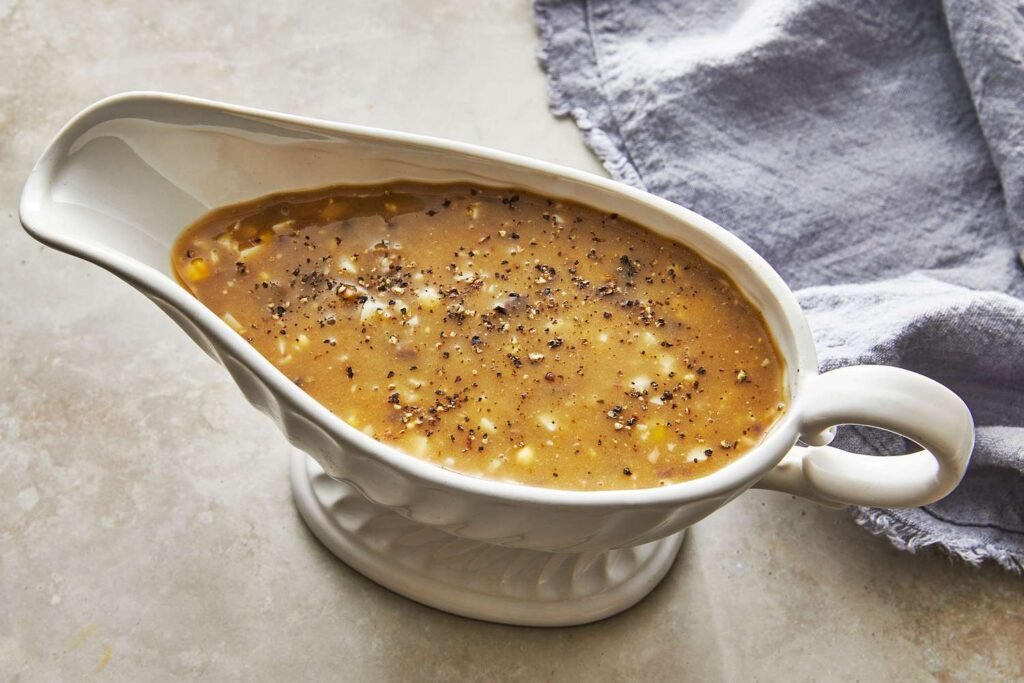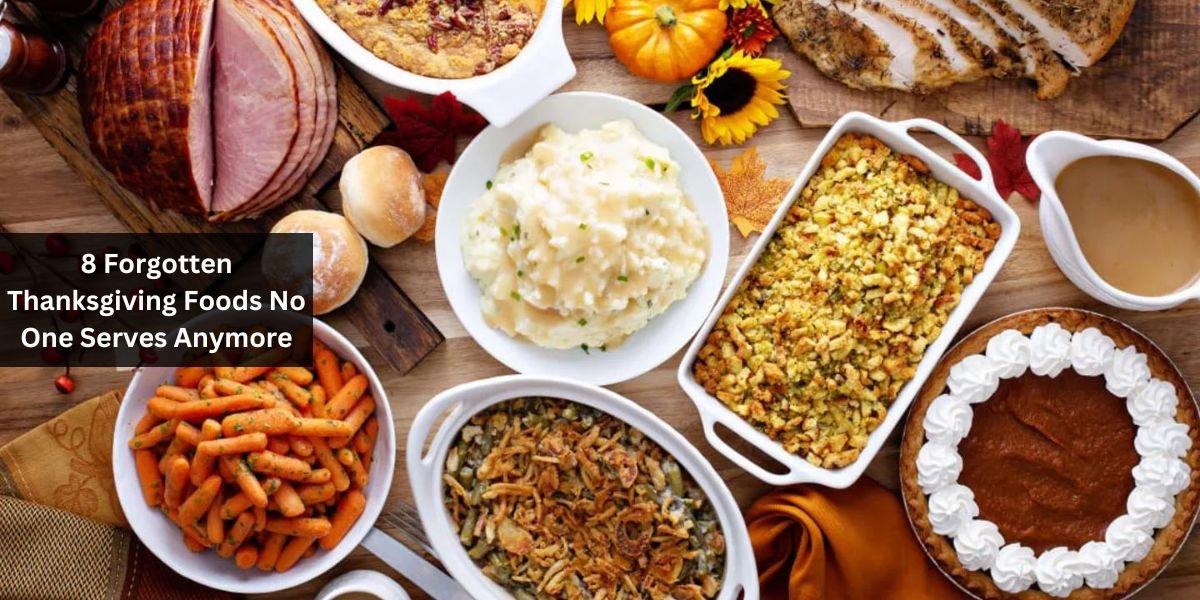8 Forgotten Thanksgiving Foods No One Serves Anymore: As we prepare our Thanksgiving menus, it’s often about balancing tradition with the new, but some old gems have been left behind. Why not take a trip down memory lane and perhaps revive a few of these forgotten dishes? They just might become your new old favorite!
Why Rediscover These Lost Dishes?
- Historical Charm: Each dish offers a glimpse into the culinary past.
- Unique Flavors: They can add unexpected and delightful tastes to your holiday spread.
- Conversation Starters: These dishes are sure to spark interesting conversations around the dinner table.
1. Oyster Stuffing

The Historical Favorite
In the 19th century, oysters were plentiful and cheap, making oyster stuffing a popular Thanksgiving option, especially in the coastal regions. This stuffing features bread crumbs, herbs, and juicy oysters, creating a moist and savory side dish.
Why It’s Forgotten?
As oyster populations declined and prices rose, this dish became less common, giving way to simpler and more economical stuffing varieties.
2. Creamed Onions

A Creamy Delight
Small onions bathed in a luscious white sauce was once a Thanksgiving standard. This rich dish highlighted the sweet, tender onions in a velvety béchamel sauce, often with a pinch of nutmeg.
Why It’s Forgotten?
Creamed onions have fallen out of favor, possibly due to the rise of more vibrant and less heavy side dishes that appeal to modern health-conscious diners.
3. Jellied Cranberry Sauce in a Can

The Retro Gelatin Mold
Sure, canned cranberry sauce is still around, but the jellied variety served straight from the can with the can lines intact is becoming a rare sight. It used to be a quick, convenient option that added a funky, retro vibe to the table.
Why It’s Forgotten?
Today, more cooks prefer making fresh cranberry relish or sauce, considering it fresher and more natural compared to the heavily processed canned version.
4. Giblet Gravy

A Rich Tradition
Giblet gravy, made with the organs of the turkey—heart, liver, gizzard—chopped and cooked into a thick, savory gravy, was once a way to use all parts of the bird, adhering to a waste-not philosophy.
Why It’s Forgotten?
Modern palates may be less inclined toward organ meats, and many home cooks opt for simpler, quicker gravy options that don’t include giblets.
5. Mincemeat Pie

The Sweet-Meat Concoction
Originally, mincemeat pie included real meat along with fruits and spices. Over time, the meat was often left out, but this rich, spiced fruit pie was a holiday favorite through the early 20th century.
Why It’s Forgotten?
Changing tastes and the labor-intensive process of making traditional mincemeat have made this dish a rarity at modern Thanksgiving celebrations.
6. Suet Pudding

A Hearty Dessert
Suet pudding is a dense, moist cake made with suet (raw beef or mutton fat) and often mixed with molasses, fruits, and spices. It was a hearty option that fell out of favor as lighter desserts became popular.
Why It’s Forgotten?
The use of animal fat in desserts is less appealing in today’s health-conscious and often vegetarian-friendly society.
7. Boiled Custard

The Drinkable Dessert
Boiled custard, a thick, pourable custard often spiked with rum or whiskey, was a popular holiday drink similar to eggnog. It was traditionally served warm and considered a special treat.
Why It’s Forgotten?
As commercial eggnog became widely available, homemade boiled custard became less common, overshadowed by its convenience and popularity.
8. Indian Pudding

A Colonial Classic
This slow-cooked pudding made from cornmeal, milk, molasses, and spices is a direct descendant of Native American recipes adapted by the colonists. It was a Thanksgiving fixture for centuries.
Why It’s Forgotten?
Its lengthy cooking time and the dominance of quicker, more modern desserts have pushed Indian pudding to the sidelines.
Conclusion: Embracing Culinary Heritage
While these dishes might have faded from memory, they each hold a special place in the history of Thanksgiving. Whether you’re looking to revive these classics or simply explore the stories behind them, bringing one to your holiday table could add both flavor and history to your feast.

